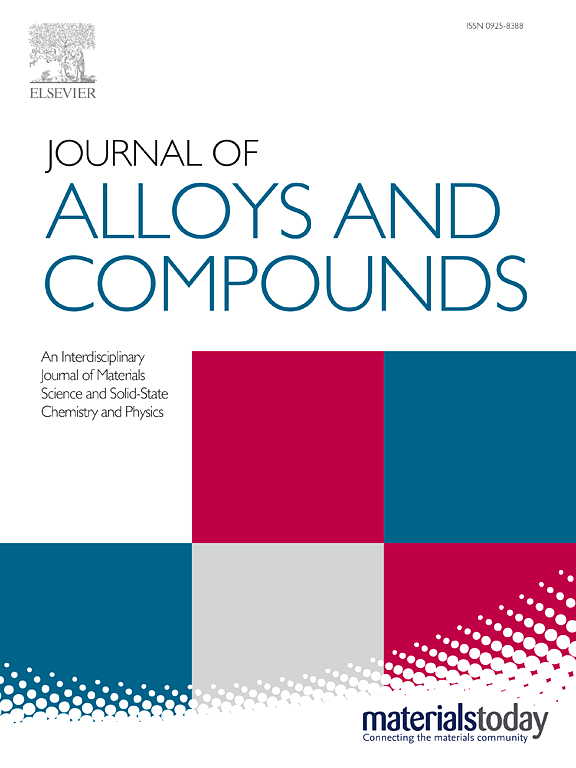双金属(NiCo)金属-有机框架纳米片与超细钌作为双功能电催化剂的整体水分解
IF 5.8
2区 材料科学
Q2 CHEMISTRY, PHYSICAL
引用次数: 0
摘要
尽管金属支撑界面的构建和电子结构的调制在提高碱性整体水分解电催化活性方面具有很大的潜力,但仍然具有挑战性。本文设计了超细Ru纳米颗粒与在CC上制备的双金属(NiCo)金属有机骨架纳米片(Ru/NiCo NDC/CC, NDC: 2,6-萘二羧酸)偶联,以实现上述策略。Ru和NiCo NDC的耦合效应有效地调节了Ru/NiCo NDC的电子结构,促进了电子转移,增强了整体水分解的固有活性。NiCo NDC纳米片的存在为锚定更多的超细Ru提供了更大的表面积,从而显著增加了电化学活性面积,增强了碱水分解的电催化活性。因此,在酸性和碱性溶液中,Ru/NiCo NDC/CC的最佳过电位分别为61和59 mV,为-10 mA cm-2。此外,Ru/NiCo NDC/CC电催化剂表现出优异的OER活性,在10 mA cm-2下过电位为228 mV。此外,Ru/NiCo NDC/CC制备的水电解槽作为双功能电催化剂,在1.56 V下电流密度为10 mA cm-2。这项工作强调了构建金属支撑和调节电子结构的双重策略在提高电催化性能方面的可行性。本文章由计算机程序翻译,如有差异,请以英文原文为准。

Bimetallic (NiCo) metal-organic framework nanosheets with ultrafine Ru as bifunctional electrocatalyst for overall water splitting
Constructing metal-support interface and modulating electronic structure are challenging despite the promising potential in boosting electrocatalytic activity for alkaline overall water splitting. Herein, ultrafine Ru nanoparticles coupled with bimetallic (NiCo) metal-organic framework nanosheets fabricated on CC (Ru/NiCo NDC/CC, NDC: 2,6-naphthalenedicarboxylic) were well-designed to achieve the aforementioned strategies. The coupling effect of Ru and NiCo NDC effectively regulated the electronic structure of Ru/NiCo NDC, which facilitated electron transfer and enhanced the intrinsic activity for overall water splitting. The presence of NiCo NDC nanosheets provided larger surface area for anchoring more ultrafine Ru, which significantly increased electrochemically active area, augmenting electrocatalytic activity for alkaline water splitting. Consequently, the optimal Ru/NiCo NDC/CC required low overpotentials of 61 and 59 mV at −10 mA cm−2 in acidic and alkaline solution, respectively. Additionally, Ru/NiCo NDC/CC electrocatalyst exhibited a superior activity for OER with an overpotential 228 mV at 10 mA cm−2. Moreover, the water electrolyzer fabricated by Ru/NiCo NDC/CC as bifunctional electrocatalyst delivered a current density of 10 mA cm−2 at 1.56 V. This work highlights the feasibility of a dual strategy of constructing metal-support and regulating electronic structure in enhancing electrocatalytic performance.
求助全文
通过发布文献求助,成功后即可免费获取论文全文。
去求助
来源期刊

Journal of Alloys and Compounds
工程技术-材料科学:综合
CiteScore
11.10
自引率
14.50%
发文量
5146
审稿时长
67 days
期刊介绍:
The Journal of Alloys and Compounds is intended to serve as an international medium for the publication of work on solid materials comprising compounds as well as alloys. Its great strength lies in the diversity of discipline which it encompasses, drawing together results from materials science, solid-state chemistry and physics.
 求助内容:
求助内容: 应助结果提醒方式:
应助结果提醒方式:


